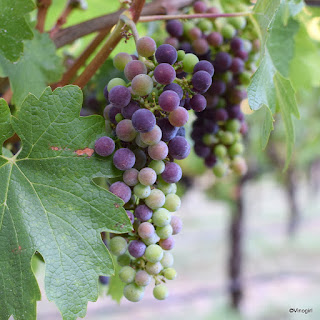High winds forecast for October 14th did not materialise. (Although, as a precautionary measure, PG&E did shut off the power to most of the county of Napa for a total of 46 hours and 31 minutes). A similar forecast for October 25th seemed like an non-event: that was until about 7 pm in the evening. I was busy making dinner when all of a sudden the roof felt like it was being lifted off the house, the timbers creaking and moaning. Vinodog 2 was very disturbed. My poochie does not like wind.
The extremely high winds continued throughout the night and were very, very loud. So loud, in fact, that I did not hear the demise of a large deciduous oak that was toppled on the edge of Vinoland's creek. At first, it looked like it had missed the bottom row of Cabernet vines. However, on closer inspection, when V2 and I returned from our walk, I was able to see that the fallen tree had landed on the first seven vines. Bummer. It was only later, when Vinomaker had performed a bit of chainsaw-surgery, that I discovered only one vine had bit the dust, snapped off near the base. Bad, but it could've been worse. Sigh.
Hard life being a farmer, I really should have become a meteorologist.



















